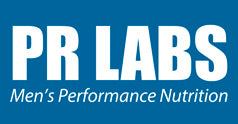Everything To Know About BPH and Treatment Options
If you're a man over the age of 40, there's a good chance that you've heard of BPH—or benign prostatic hyperplasia. It's one of those medical terms that gets thrown around so often when you start to talk about prostate health with your physician. But in case you are unfamiliar with it, let's break down what this condition is, how it impacts men as they age, and how it’s treated.
What Is Benign Prostatic Hyperplasia (BPH)?
Benign prostatic hyperplasia (BPH) is the medical term for an enlarged prostate gland. The prostate is a gland that surrounds part of the urethra, the tube that carries urine from your bladder out of your body. As you get older, your prostate can get bigger and press on surrounding tissues in your pelvis and lower abdomen, causing symptoms such as having trouble starting to urinate or having a weak stream of urine.
BPH isn't cancer, but it can cause problems like frequent urination and urgency with urination; these are known as urinary symptoms. Other common symptoms include increased pelvic congestion (feeling full), difficulty emptying your bladder completely when urinating (retention), pain in your lower back or hips caused by pressure on nearby nerves by the enlarged gland pressing against them during ejaculation/orgasm which may lead to erectile dysfunction/impotence if left untreated over time due to lack of blood flow into penis causing poor circulation resulting in poor erection quality & performance during sex despite having no underlying physical causes such as nerve damage etc.
How To Relieve BPH Symptoms (Non-Surgical)
Before we get into surgical options and treatment options like GreenLight Laser Prostate Surgery or UroLift System, let’s talk about some of the home remedies you can try first to help alleviate symptoms of BPH:
- Try a warm bath. Taking a warm bath may help relax your muscles and make them less tight, which will reduce the swelling in your urethra.
- Use an electric heating pad or ice pack on the area around your prostate gland (the base of your penis). This may help reduce inflammation and improve urine flow from the bladder into the urethra.
- Try alternating between heat and cold treatment: Heat helps relax muscles so they don't squeeze as tightly against blood vessels; cold shrinks blood vessels so there's more room for urine to flow through them easily--it also numbs pain receptors in that area, which means less discomfort! You could also try combining both methods by alternating between hot water bottles/heating pads/blankets with ice packs or cooling gel packs; this will give you twice as much relief from pain than either method alone would provide!
- Medications have been shown to help with the symptoms of BPH such as urination flow.
Treatment Options For BPH
The UroLift System Treatment
The UroLift System treatment is a minimally-invasive procedure that can be done in the doctor's office. The doctor will make a small incision in your abdomen and insert a small tube into your urethra, which is the tube that carries urine from your bladder out of your body. This allows them to lift up and expand the tissue surrounding it so that it no longer closes off during urination.
After this process is complete, you may experience some pain or discomfort for about two weeks after surgery but there are no major side effects associated with this type of treatment option for BPH symptoms
Prostatic artery embolization (PAE)
Prostatic artery embolization (PAE) is a minimally invasive procedure that can help reduce the symptoms of BPH. It's not for everyone, but it's an option if you have mild symptoms and aren't ready for surgery or other treatments.
PAE works by blocking blood flow to your prostate gland, which makes it smaller and stops it from producing hormones that cause problems with urination and sex drive. The doctor uses X-rays to find the arteries that supply blood to your prostate gland, then puts tiny particles into those arteries so they block them from getting any more blood flow from other parts of
your body.
Green Light Laser Prostate Surgery
Green Light Laser Prostate Surgery is a therapy that evaporates prostatic tissue blocking the outlet of the bladder. It is performed under anesthesia by placing a telescope into the urethra up to the level of the prostate. The laser fiber is guided through the scope and the prostate tissue is then quickly and gently vaporized. Men who choose this option will have general anesthesia and may be required to stay overnight, but in most cases, the patient can go home later the same day and return 1-3 days later to have the catheter removed.
The Importance of Prostate Health
Although there is no sure way to prevent BPH, there are plenty of things you can do to support your prostate health. Lifestyle changes and prostate supplements are two of the best ways to support your prostate health today. Incorporating healthy habits into your daily routine is always a smart option. For example, The Prostate Cancer Foundation suggests that eating cruciferous vegetables, berries, and omega 3’s are all great food items that support
prostate health.
Another way to take care of your prostate health, especially if you are finding it difficult to eat an antioxidant-rich diet, is through supplementation. Here at PR Labs, we have developed a powerful prostate supplement for men. Prost-P10x is a Urologist-Formulated Natural Prostate and Urinary Health Support supplement. The active ingredients in Prost-P10x also include antioxidants and other agents to encourage normal prostate and urinary function. Supportive, but not conclusive research, has shown certain ingredients in Prost-P10x to provide support for the body’s natural response processes that affect men’s sexual and prostate health.
Join Our Community & Save 10% Off Your First Order
We’ll send you a coupon code for 10% off your first order. Stay on our list
and we’ll keep you updated with tips for optimal health, new product launches, sales, and more!




